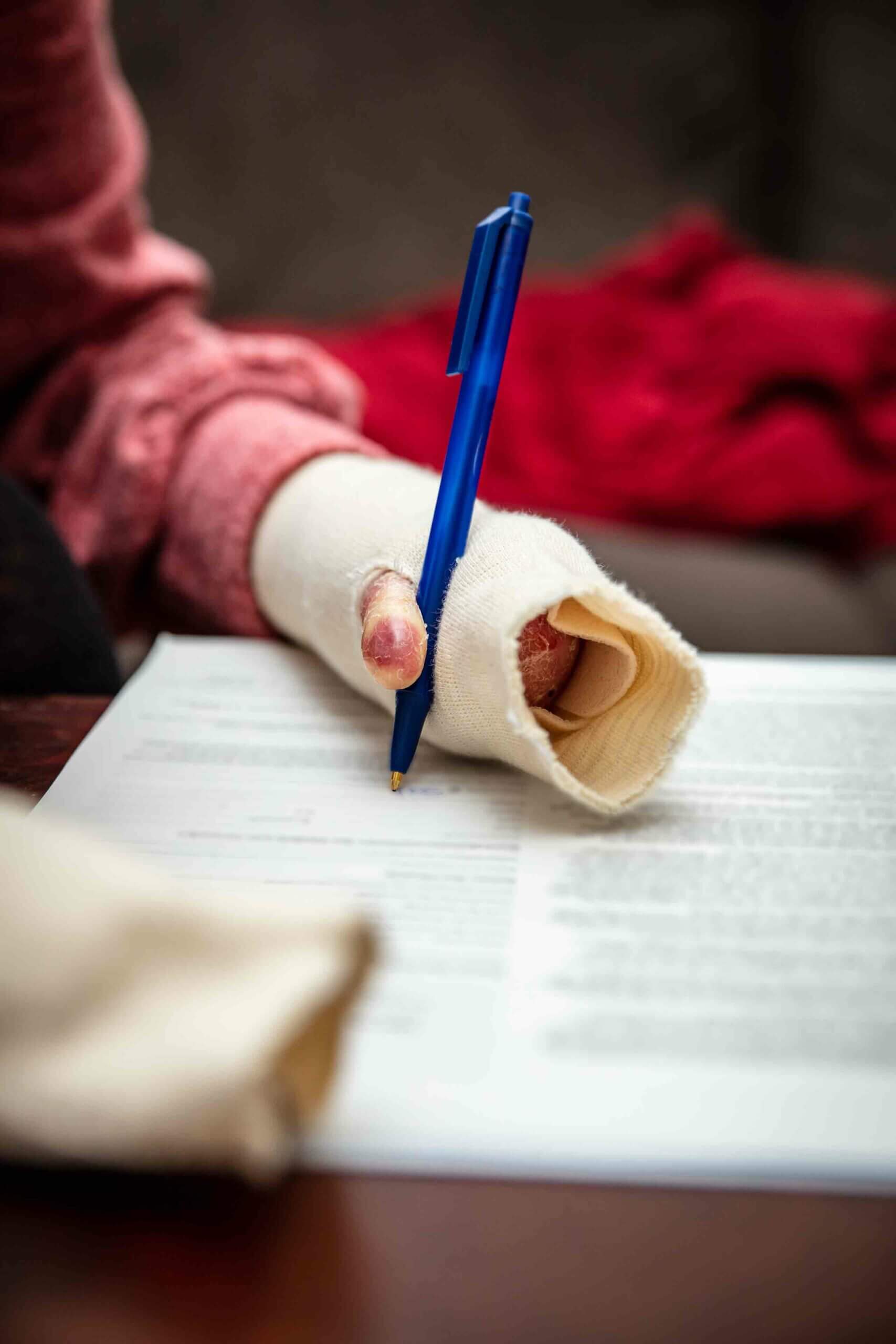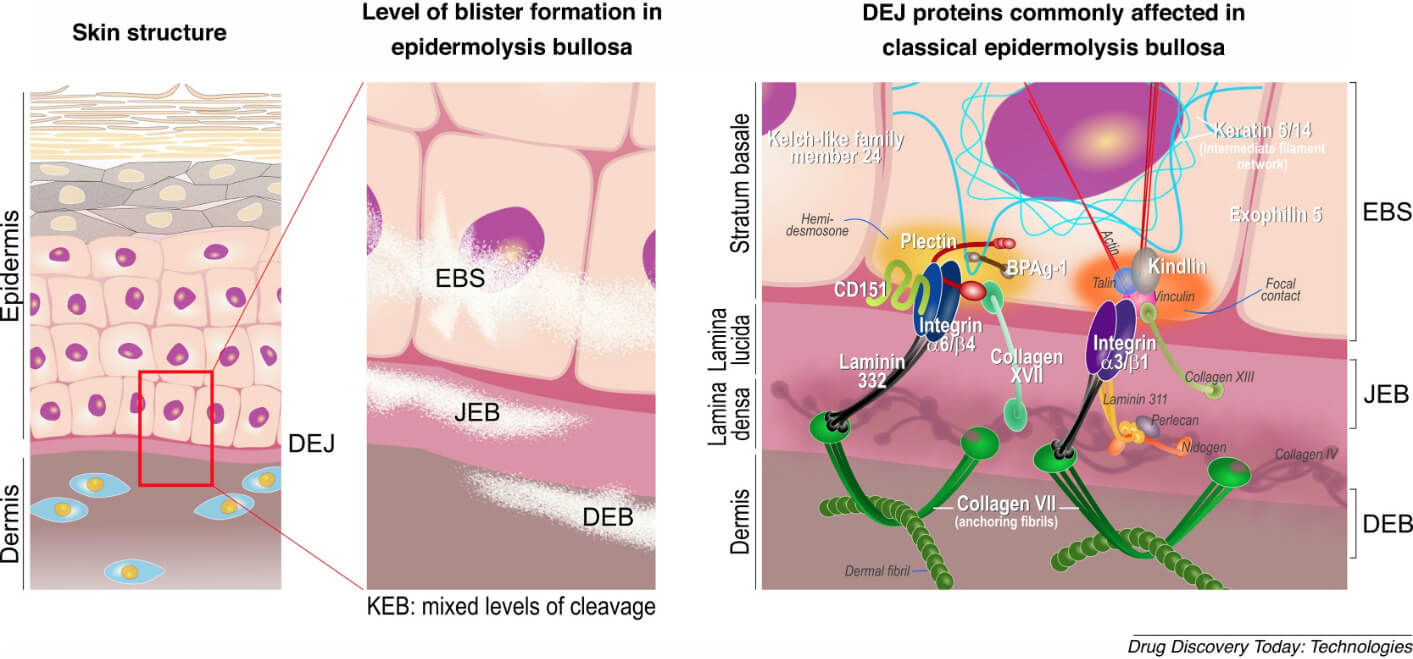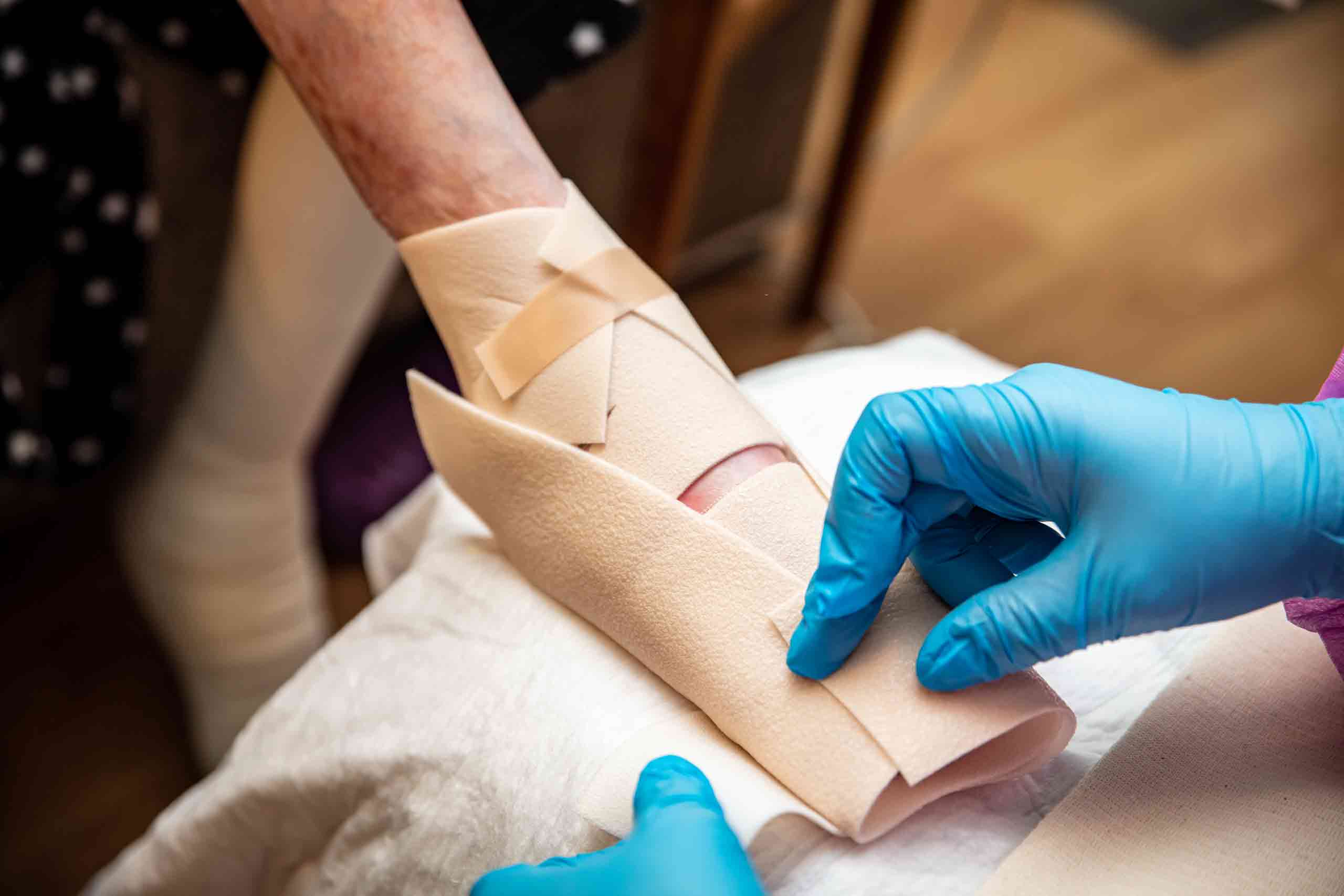The Worst Disease You've Never Heard Of.™
Epidermolysis bullosa (EB) is a group of rare, inherited disorders that manifest as blisters or erosions/wounds of the skin and, in some cases, the epithelial (internal) lining of other organs.
Inherited epidermolysis bullosa (EB) encompasses over 30 phenotypically or genotypically distinct entities/gene mutations that result in a defective skin structure.
All types of EB share the prominent symptom of extremely fragile skin that blisters and tears from minor friction or trauma.
Due to the defective skin structure, wounds heal slower than normal leading to poor wound healing.
The list of complications and secondary illnesses can be long and requires multiple interventions from a range of medical specialists.
Minor injuries that develop into wounds (both superficial and deep) can lead to severe, chronic inflammation and infections that can have life-altering and/or life-threatening consequences.
EB affects all genders and racial and ethnic groups equally.

There are four major types of genetically inherited EB which include Simplex (appr 70% of patients), Dystrophic (appr 25% of patients), Junctional (appr 5% of patients), and Kindler (<1% of patients). These four types are differentiated by the cleavage location of defective structural proteins and anchoring fibrils within the skin structure, which is also where the blisters/wounds/erosions arise, as shown in the following figure.
Simplex (EBS): Blisters/erosions/wounds arise in intraepidermal (lower part of epidermis)
Junctional (JEB): Blisters/erosions/wounds arise in lamina lucida (top portions of basement membrane due to anchor fibril defect between basement membrane and epidermis)
Dystrophic (DEB): Blisters/erosions/wounds arise in sub-lamina densa (upper dermis due to anchor fibril defect between basement membrane and upper dermis)
Kindler (KEB): Blisters/erosions/wounds arise in multiple skin layers including the basement membrane, may be present at the same time

Presently, there are no medications, products or procedures that are clinically proven to cure EB, but there are some treatments that can alleviate some of the debilitating symptoms of certain subtypes of EB. Recently the U.S. FDA approved VYJUVEKTM, a topical gel that treats one single wound in Dystrophic EB in patients 6 months and older.
The current standard of care for EB is supportive, which includes the following:
Daily Wound Care
Protective Bandaging to Minimize New Injuries and Infections
Treatment of Infections
Pain and Itch Management
Maintaining Good Nutrition

EB is a genetic, inherited disease. When one or both parents carry the mutated gene, there is an increased risk of their offspring developing EB. Genetic testing and counseling are available.
Inherited EB is a “global” disease. The genetic mutations affect all racial and ethnic groups equally. EB affects both sexes equally.
The understanding of the epidemiology of EB is changing as the understanding of the disease and its signs and symptoms changes. Based on data collected through the National Epidermolysis Bullosa Registry, EB is estimated to occur in 20 newborns per 1 million live births in the United States.
The exact number of persons with EB is unclear, but estimates suggest the following in the different regions of the world:
US: Estimate 20,000-50,000 current cases (comparable to Cystic Fibrosis)*
Europe: Estimate 50,000-80,000 current cases
Japan: Estimate 1,000-5,000 cases
Globally the prevalence is estimated to be in about 500,000 for patients with EB.**
*https://med.stanford.edu/dermatology/resources/gsdc/eb_clinic

DEBRA of US: #ItWontHurtToWatch: Rafi
DEBRA of US: #ItWontHurtToWatch: Asa

Please tell us who you are so we can keep you updated on the future of treatments for EB.